From: Dunbeath to Thrumster
Distance: 17m / 27.4km
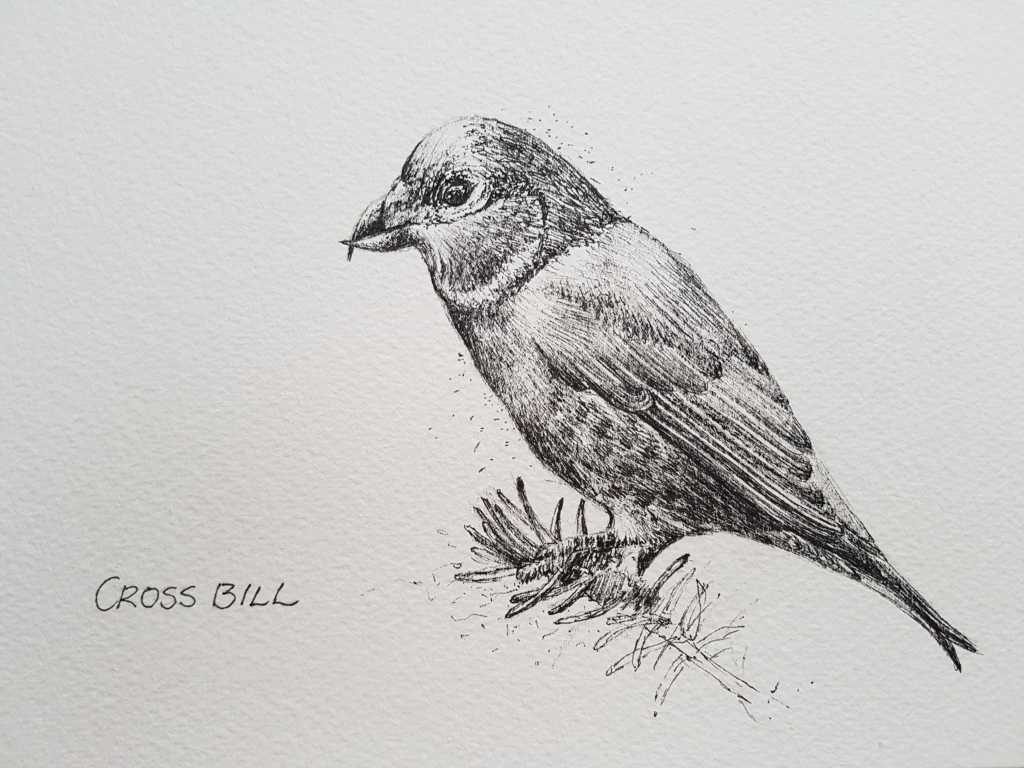
I really do not know why I left myself with such a long day’s walk for yesterday. Maybe I thought the adrenaline would have kicked in at getting close to the end, maybe I thought I’d be super fit and injury-less. Anyway, yesterday was a bit of a bugger.
It started with waving Gus off at sparrows. I was so sad to see him go .. it’s a long time since we’ve spent so much time alone together. He’s the easiest of company and we had space for both frivolous chats and serious conversations about everything under the sun. I will always treasure his gift of coming over from Sydney and giving up one of his three weeks annual holiday, to help me negotiate my way along the John o’Groats Trail.
As the son left, so too did the sun. For my first time in Scotland the rain started to fall and there was a heavy mist blocking the view of the Moray Firth. There was the choice of sticking to the Trail (‘Challenging walking; volunteers have built some stiles and marked the route with white paint daubs where land-owners have permitted, but there are still barbed wire fences to cross, three ravines to negotiate and some rough, overgrown and tussocky going on the clifftop. Care needed with navigation) OR reverting to the A9 and peeling off on to the A99 after Latheron (hard tarmac, lunatic drivers and dull scenery).
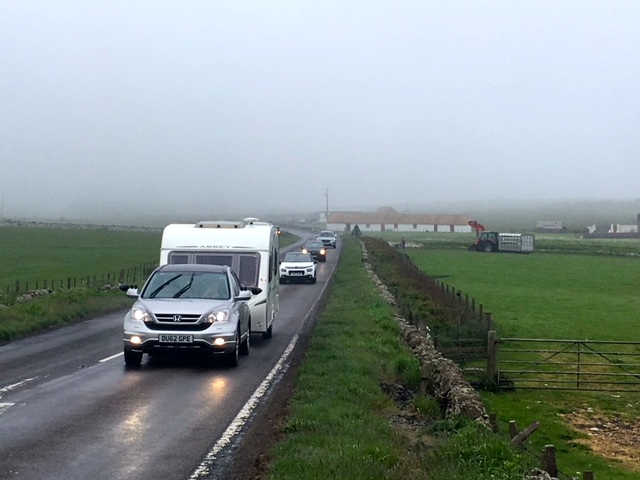
Delights of the A9
Knowing the views would be virtually non-existent from the Trail, I opted for the road, thinking I could chew up the miles quickly and arrive in time for afternoon tea at the promising-looking Thrumster House, my accommodation for the night.
Just a mile down the road I came across a farmer marking his sheep after they’d been shorn. It was a job which had to be done quickly as the sheep didn’t enjoy being so tightly enclosed and in an attempt to get free they were scrambling all over each other. The farmer explained that he was also taking the opportunity to spray them for ticks. It was something I wished I’d done myself a couple of days ago. I’d found several of the blighters clinging to my legs, after all the bracken-bashing of the day.
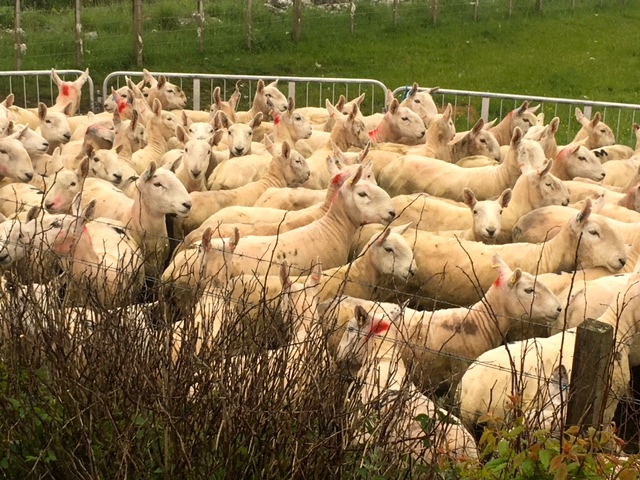
Waiting to be numbered ..
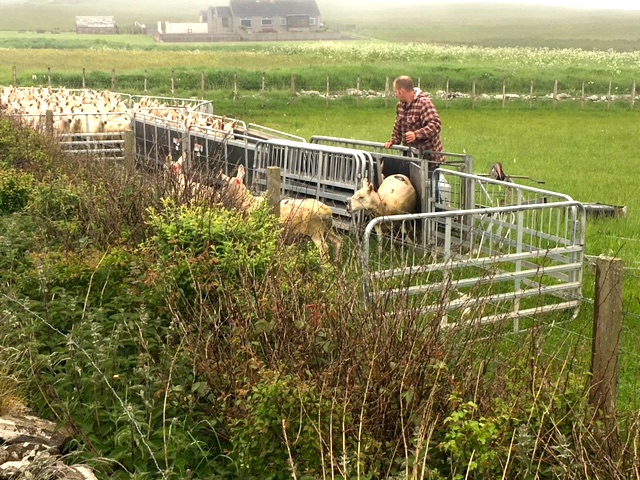
.. getting the farmer’s attentiion
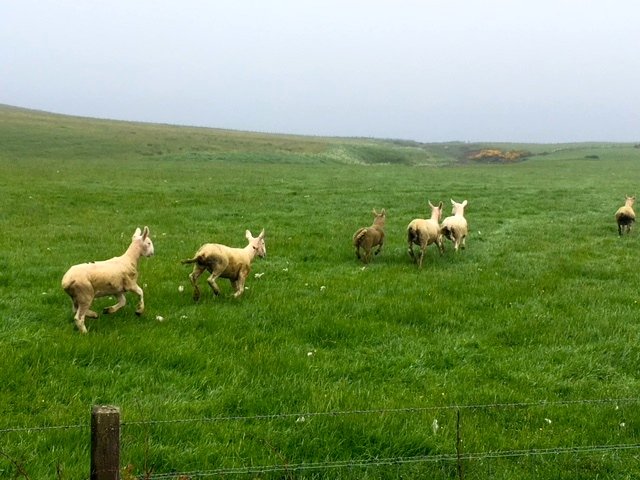
.. and racing to freedom. Yay!
It was an atmospheric sort of day with the mist. In every direction there was a blurring of trees and houses and the distant hills. I kind of like this look, so was happy. I picked up sandwiches and decadent cakes from the nearby cafe. There I got chatting to a couple of punters who were driving their vintage cars up to John o’Groats. Ahhh. That explained the Morris Minors, Cortinas and Morgans being driven past at a stately speed.
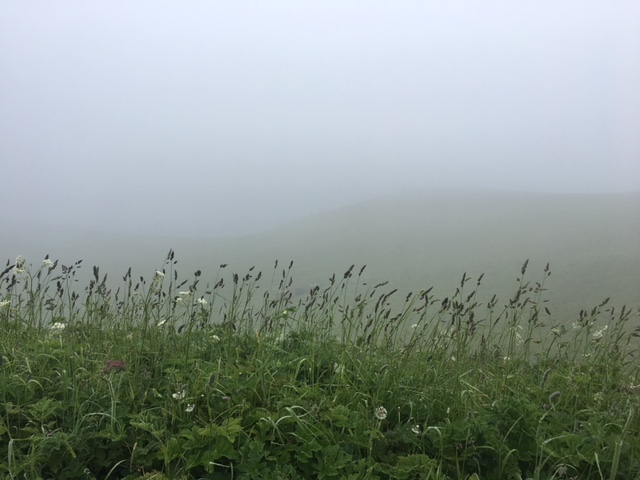
Looking out to the coast
Lybster was once an enormous herring fishing port employing 1500 people but now, far more appropriately, it’s lobster that Lybster mainly catches. The ill-timed Wick and Lybster Light Railway was built just too late to profit from the industry. It’s an attractive village with a striking harbour and a main street that is so wide it could afford shoppers to triple park their cars, while they nip into the grocer’s to buy a pint of milk. Not that there are enough cars really in this remote part of Scotland. Lybster was a planned village, created by local landowner General Patrick Sinclair in 1802. In years to come his sons fought in the Battle of Waterloo and in their honour he named the crossroads on Main Street ‘Quatre Bras’.
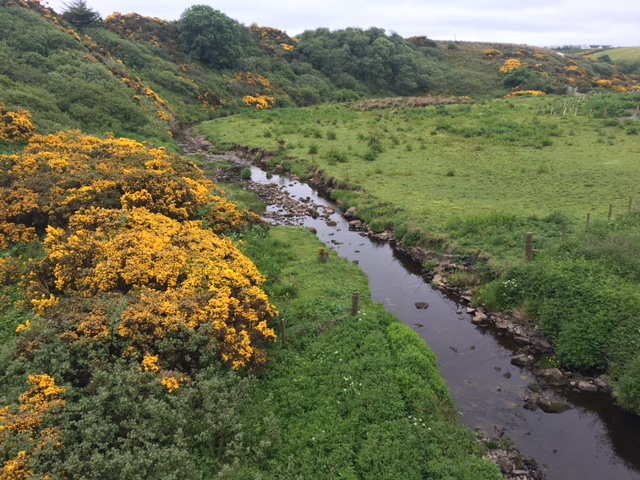
The river where one of my poles dropped through the railing into the water
The village is well-known in Caithness for hosting the World Championships of Knotty, a variant of shinty. Knotty uses a stick (a knotty), which can be almost any form of wooden implement, and a cork fishing float as a ball and teams have varying numbers of players. Local history has it that the fishermen’s wives invented it to help keep their men sober when they were ashore, after fishing for herring. With the decline of the industry knotty fell into abeyance until local hotelier, the late Bert Mowat, found a copy containing the few rules of the sport wedged between the pages of a Gaelic bible in a bedroom. In 2006 it was thought the lack of traditional cork floats might be a threat to the continuation of the sport. Sadly the Portland Arms Hotel is closed for renovation so I was unable to ask whether herrings and cork have eventually knocked knotty out of the world arena of sport.
All along the way yesterday there were crumbling ruins of stone houses only just surviving from another century. They stood lonely and isolated in fields or had small clusters of grey single-storey, pebble-dashed houses around them .. with no effort made to incorporate them sympathetically. Many of the yards had rusting old caravans abandoned to the ravages of the salty sea winds. Ugly disused farm machinery often completed the scene. Throughout my 17 miles of walking I saw virtually no-one. No-one tending their garden, washing their garden or talking to their neighbour over the fence. It made for a desultory, tumble-weed sort of mood.
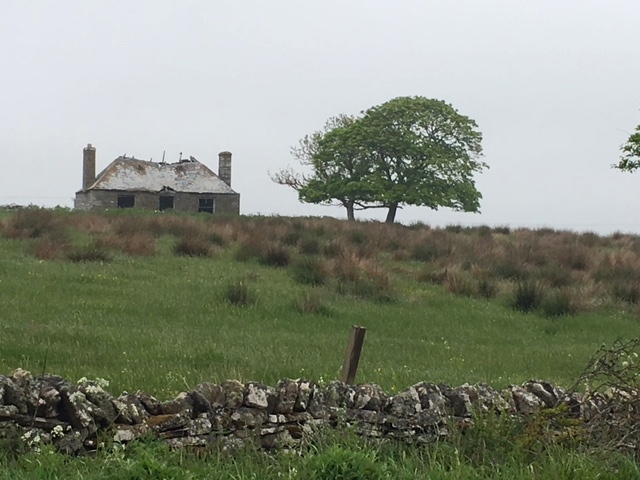
Abandoned houses
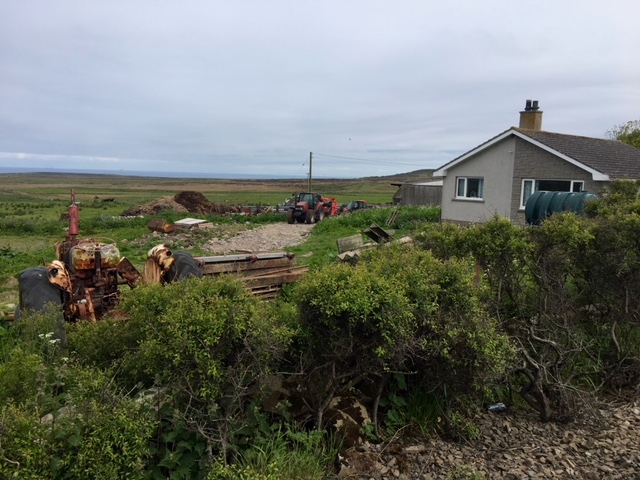
Scrap-yard gardens
Despite all this, the names of points and headlands along the coast were lyrical: Muckle Roberry, Wester Stack of Ulbster, Creag-a-backy and Black Skerry to name but a few. Impressive sea stacks, caves, natural arches, blow holes and toppling cliffs abound, making for dramatic scenery .. but as I was walking the A9 I saw nothing of them. There were no signposts for roads or even paths leading down to such would-be tourist attractions. Just after Clyth Harbour the red and white striped Clyth Lighthouse came into view across the fields. I decided to ignore the sign indicating it was a private road to take a look. There’s a similar lighthouse in Sydney, called Hornby. Its stripes are vertical and I did a drawing of it for the post ‘3 months to go’, ahead of the walk. It seems such a long time ago.
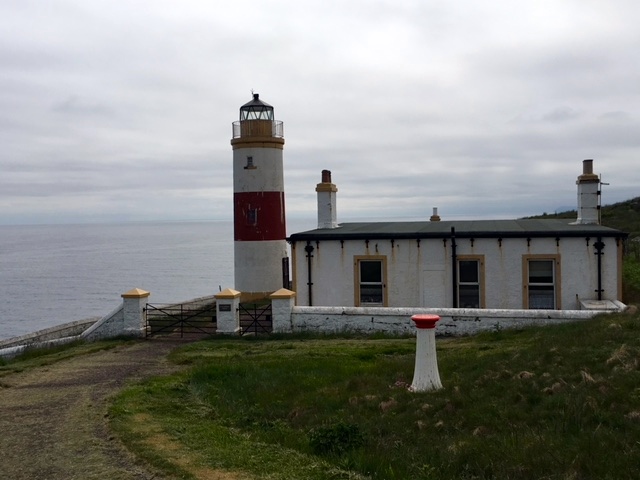
Clyth Lighthouse
Beyond Clyth I had been looking forward to seeing the signpost for Whaligoe Cafe. It stands at the top of Whaligoe Steps, an amazing feat of engineering: over 330 stone steps lead down to what was once a thriving fishing port built in the mid 18th century. Herring, haddock, ling and cod were landed there, gutted and carried up the steps in creels by a small army of women and taken to market by foot in Wick, 10 miles or so away. There was a cooperage at Whaligoe as well and barrels of salted herring were packed onto boats and exported from the harbour. Regrettably I only reached Whaligoe after cafe closing time and so missed the buttery galettes which are recommended on social media.
From Whaligoe it was another three miles to Thrumster. I walked past a cliff-top graveyard and views to the west of a windfarm .. but little else of note.
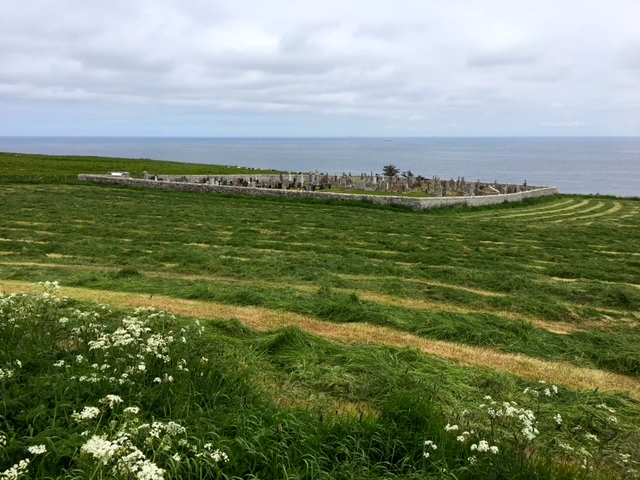
Coastal graveyard
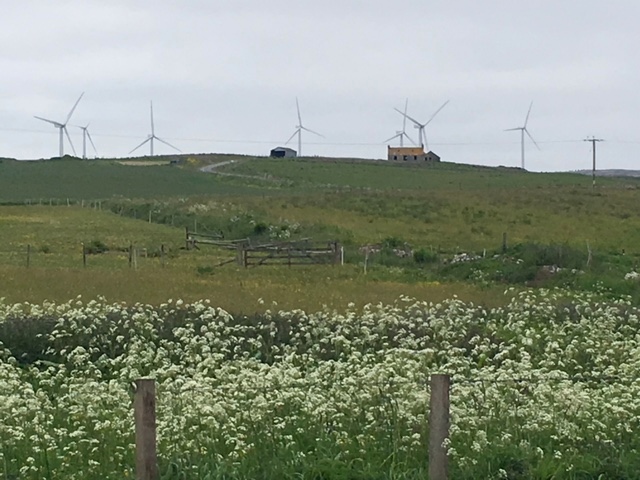
Windfarm in the distance
I felt overwhelmingly weary as I came to the turn off for Thrumster House. Walking past the lodge at the gateway and down into the long, long drive it felt as if I was entering another world. The day had been never-ending and dull and it had taken an enormous effort to just get through it. Even though I have only two days left of the journey, yesterday felt like an eternity .. and anyone who knows me well, will know just how much I fear eternity.
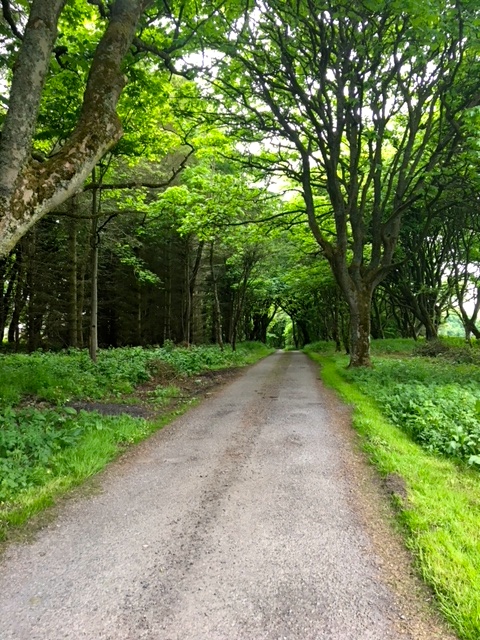
Entrance to Thrumster House
The welcome I got at Thrumster House completely turned that all around. A log fire, the warmest of country houses, a friendly, welcoming hostess and DOGS .. a Black Flat-coat Retriever and an English Setter .. all helped me to leave the vagaries of the day behind. How lucky was I.
Black Dog Tails
Chuckles .. my everyday hero .. I thought about him heaps today. I still miss him.
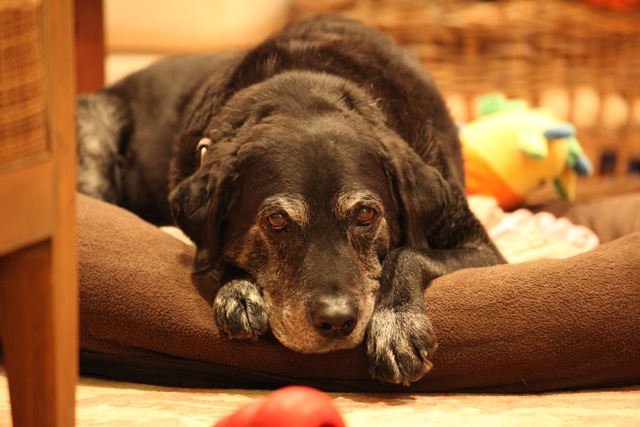
![]()


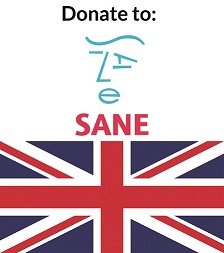
Nearly there! Perhaps your gruelling day was meant to remind you what an incredible achievement this has been. We’re cheering you on for the final stretch!
Wow, you are so close!!!! Sorry to hear that today was hard, but hopefully its all good from. Sending more love and positive energy for your final miles/kilometers :-), xoxoLUCY❤️
Chicky Chack… also watching over you… very close now, just one sleep away!! V v exciting. I’m wondering how you walk with one pole… use it as a crutch for the Planters? Or how about like a drum majorette, flinging it high into the air? (or was that how you lost the first one?)
Hi Jules.
Feeling every step of the way with you during these last few days.
Chin up and keep striding, you are amazing!!!
Looking forward to seeing you back in Gloucestershire very soon.
Lots of love Tony & Mandy xx
I know you are weary and it must have been so sad to see Gus go but when this is over you will look back on these photos and see how beautiful they are. And how divine was the beautiful Chuckles – you are awesome Jules. xx
Seventeen miles is about two miles too far for comfort. I’m not surprised you were a bit weary. I would have expected more mention of midges, although we are not at the height of the season, either you have been lucky or very stoical?
Here is a bit from my journal, as with you, only two more days to go:
“I arrived at The Brown Trout Inn at Watten, and being Sunday afternoon things were very quiet. I was greeted by
a very pleasant young Polish girl who made me a cup of tea and showed me to my room, and here I was able to
have a bath. Later I was trying to find some accommodation in Keiss so that I could be a short distance from John o’Groats
on my last day giving me chance to get away and make some progress in getting home. The staff at The Brown Trout were very helpful and the barmaid ended up ringing her boyfriend who provided a phone number for Dunroamin, my final b and b stay the following night.
I went into the bar before I ate and chatted with locals. One guy who was a keen fisherman was working on the dismantling of the Dounreay Power Station, and another had worked on the rigs but he had lost his driving licence and seemed to be out of work; he turned out to be the father of the helpful barmaid. When I went into the village shop next morning this girl turned up again serving in the shop. I had a huge plate of mussels Marnier as a starter with a glass of Sauvignon Blanc, and then Sirloin steak etc. with a glass of Merlot, and chocolate fudge cake and custard to finish. I went back into the bar but there were now only some Polish youths talking amongst themselves.”
Hi Jules,
Not long to go now.. just so I don’t miss the chance I wanted you to prepare for the end. As you approach JOG muster your strength as the experience is a cross between euphoric and relief. After three months slogging this wonderful land it will be hard to contain a tear and a choking at the prospect of realising the end is in sight. For us , once the initial excitement had ebbed away we were left with an emptiness at the thought of closing this chapter of our lives. The memories will stay with you every step for many many years as it has for us.
Well done and congratulations
Look forward so much to your progress each day ! You have done such a brilliant journal and well done to you for the fabulous journey you have taken us all on…. nearly there! Xxx well done to you!
Jane xx
So nearly there Jules, deep breath and onward…very very proud and impressed by your achievements xxx
Nearly nearly there, dearest Jules … we have so enjoyed your blog, the amazing photos, the history and all of it. Well done and see you extremely soon!! xxLiz and Graham
Nearly, nearly, nearly there, Jules! And how lovely that you put Chuckie in for the penultimate black dog. He was such a lovely boy
The road to Thrumster House and the end of the trip is looking so inviting. So nice to do this last leg with Angus.You are amazing!
Oh Jules – another day when you have courageously dug deep to keep putting one foot in front of another. Tomorrow will be different – and you’ll tackle it with your usual strength. We’re all still here for you, just the other side of the screen! Lots of love from Arundel! Xx
Oh Jules – darling Chuckles – he would not have enjoyed the highway either. What a slog but well done – well done.
We are so amazing that you are nearly there. Sending all our love and congratulations and thank goodness for warm country houses and dogs! xx
I love your everyday hero. With the grey eyes, mouth and paws, he looks just like a much bigger version of my Bosco, who regretfully reminds me everyday, that he is now an old man…..13.5 yrs!
It’s amazing how much we can love these 4 legged, furry creatures, who are so totally loving and devoted to us. Cruel that they don’t live as long as we do….
I’ve miscounted your days, so no longer want to speculate on when you’ll be done, hopefully tomorrow? Sorry to hear that Gus isn’t with you to the end, I’m sure he is with you in spirit.
Good luck for what I hope is the final day. Vasbuyt, as they say in Afrikaans
With much love.
So close now Jules. Sometimes the hardest part is keeping on when your body knows that it will soon end. Your walk is a remarkable achievement and you will feel deservedly proud when you finish. I take my hat off to you and look forward to the finish to toast your success. Best wishes Jennifer
To dearest, amazing and courageous Jules – you are almost there!!!
From the “Beast of the East” – through snowstorms, sunshine and rain – to “Lady Forth of the North”, your “trek” has been beyond remarkable in every sense – physical, emotional, artistic, historical and above all, inspirational to so many of us.
Sending a massive virtual hug from Lima (and a longer message via email)
Jin
P.S. So wonderful to see the photo of dear Chuckles – brings many happy memories of rambles in English country lanes and further afield. He would be so proud of you!